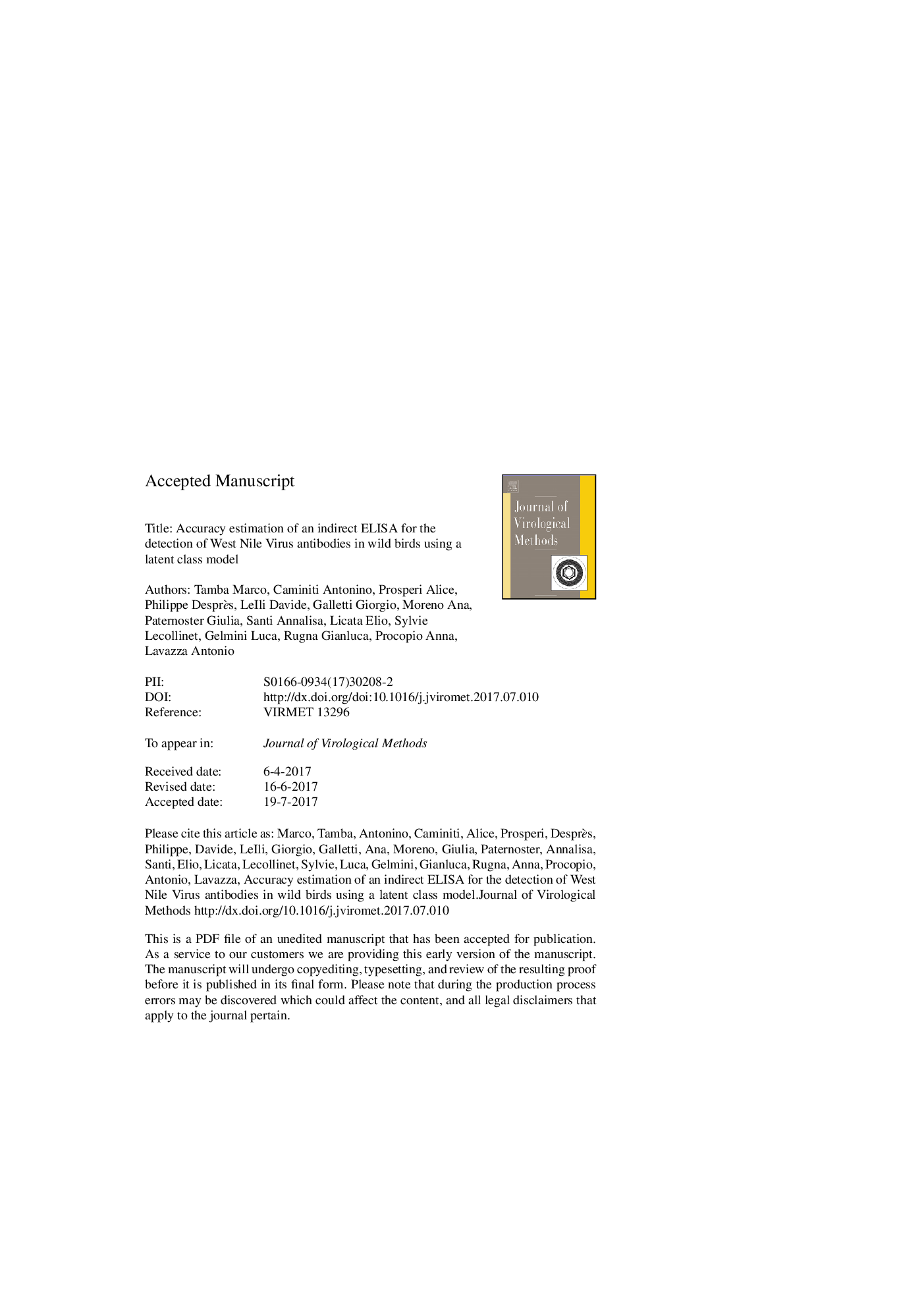| Article ID | Journal | Published Year | Pages | File Type |
|---|---|---|---|---|
| 5672945 | Journal of Virological Methods | 2017 | 15 Pages |
Abstract
West Nile virus (WNV) and Usutu virus (USUV), genus Flavivirus, are members of the Japanese encephalitis virus antigenic complex, and are maintained primarily in an enzootic cycle between mosquitoes and birds. WNV is zoonotic, and poses a threat to public health, especially in relation to blood transfusion. Serosurveillance of wild birds is suitable for early detection of WNV circulation, although concerns remain to be addressed as regards i) the type of test used, whether ELISA, virus neutralization test (VNT), plaque reduction neutralization test (PRNT), ii) the reagents (antigens, revealing antibodies), iii) the different bird species involved, and iv) potential cross-reactions with other Flaviviruses, such as USUV. The authors developed an indirect IgG ELISA with pan-avian specificity using EDIII protein as antigen and a monoclonal antibody (mAb 1A3) with broad reactivity for avian IgG. A total of 140 serum samples were collected from juvenile European magpies (Pica pica) in areas where both WNV and USUV were co-circulating. The samples were then tested using this in-house ELISA and VNT in parallel. Estimation of test accuracy was performed using different Bayesian two latent class models. At a cut-off set at an optical density percentage (OD%) of 15, the ELISA showed a posterior median of diagnostic sensitivity (DSe) of 88% (95%PCI: 73-99%) and a diagnostic specificity (DSp) of 86% (95%PCI: 68-99%). At this cut-off, ELISA and VNT (cut-off 1/10) performances were comparable: DSe = 91% (95%PCI: 79-99%), and DSp = 77% (95%PCI: 59-98%). With the cut-off increased to 30 OD%, the ELISA DSe dropped to 78% (95%PCI: 52-99%), and the DSp rose to 94% (95%PCI: 83-100%). In field conditions, the cut-off that yields the best accuracy for the ELISA appears to correspond to 15 OD%. In areas where other Flaviviruses are circulating, however, it might be appropriate to raise the cut-off to 30 OD% in order to achieve higher specificity and reduce the detection of seropositive birds infected by other Flaviviruses, such as USUV.
Related Topics
Life Sciences
Immunology and Microbiology
Virology
Authors
Marco Tamba, Antonino Caminiti, Alice Prosperi, Philippe Desprès, Davide Lelli, Giorgio Galletti, Ana Moreno, Giulia Paternoster, Annalisa Santi, Elio Licata, Sylvie Lecollinet, Luca Gelmini, Gianluca Rugna, Anna Procopio, Antonio Lavazza,
